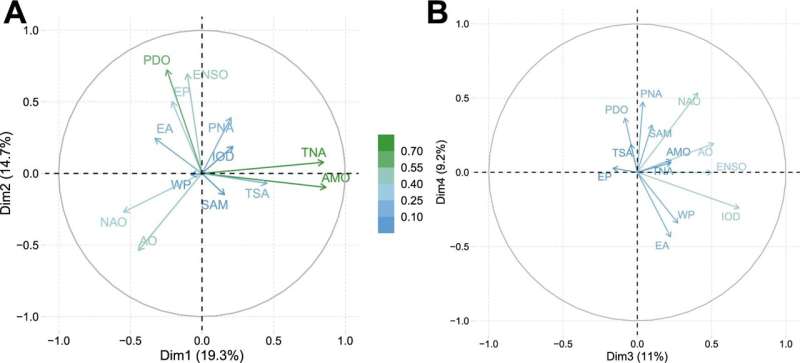
An international team of climate scientists has identified a climate teleconnection associated with increased fire activity around the world. In their study, published in the journal Nature Communications, the group used satellite data along with information gathered from weather stations around the world over the years 1982 to 2018 to learn more about patterns of increased fires in different parts of the world.
Prior research has suggested that there are climatic connections between events that happen around the world at different times. The El Niño-Southern Oscillation (ENSO), for example, has been found to impact weather in many parts of the world.
The researchers on this new effort recently found associations between major hot spots around the world tied to droughts that could be traced back to the ENSO. In this new study, they focused their attention on finding climate associations between major fires that break out during roughly the same time periods around the world.
They noted that it seemed more than coincidence that many major fires on different continents in past years occurred close to one another in time—closer than could be accounted for by seasonal weather changes.
To find out it if such fires are somehow connected, the team gathered satellite data that showed areas burned by wildfires over the years 1982 to 2018, as well as weather data. As part of their analysis, they looked for patterns that might explain how the fires occurred so closely in time.
They found patterns of weather events that led to conditions more conducive to fires, such as vegetation growth, amount of precipitation and temperatures. They also found that the Tropical North Atlantic teleconnection was the connecting factor. Its pattern of changing sea surface temperatures near the equator over the Atlantic Ocean was found to correspond in time with approximately 25% of global fires. This, they suggest, makes it one of the most powerful drivers of fires around the world.
The research team concludes that learning more about climactic phenomena that tie together major events such as droughts or large fires could help in predicting such events and planning for them.
More information:
Adrián Cardil et al, Climate teleconnections modulate global burned area, Nature Communications (2023). DOI: 10.1038/s41467-023-36052-8
Journal information:
Nature Communications
© 2023 Science X Network
Climate teleconnection tied to global fires identified (2023, February 14)
retrieved 15 February 2023
from https://phys.org/news/2023-02-climate-teleconnection-global.html
part may be reproduced without the written permission. The content is provided for information purposes only.